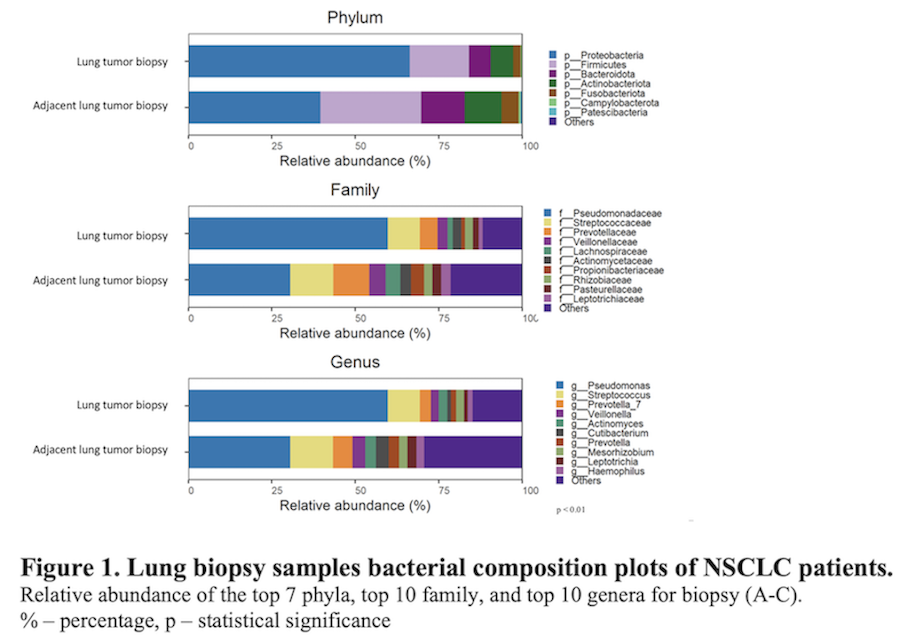Abstract
Introduction: For a long time was believed, that the healthy human lung is a sterile organ. However, culture-independent molecular techniques have reported controversial data, that the lung is not a sterile space. Furthermore, changes in lung microbiota composition may cause lung diseases, including lung cancer.
Aim: To evaluate the composition of microbiota between lung tumor tissue samples and adjacent lung tumor tissue samples in patients with non-small cell lung cancer (NSCLC).
Methods: Lung tumor tissue and adjacent tumor tissue were collected under video fibrobronchoscopy. To avoid contamination, sterile sampling equipment was used. Extraction of bacterial DNA was performed using PureLink? Microbiome DNA Purification Kit. Bioinformatic and statistical analysis was performed in the R software environment as described previously by Camarinha-Silva A et al., 2014.
Results: We enrolled 55 males and 19 females in the lung tumor biopsy group with a mean age of 70.2±8.8 years, 43 males and 20 females in the adjacent lung tumor biopsy group with a mean age of 71.8± 8.9 years. The differences between the two tissues were detected at all taxonomical levels.

Conclusion: The microbiome composition of cancerous tissue in patients with non-small cell lung cancer differs from the tumor-adjacent tissue at all taxonomical levels. The differences in these groups demonstrated, that the microbiota of the lungs may change during oncogenesis.